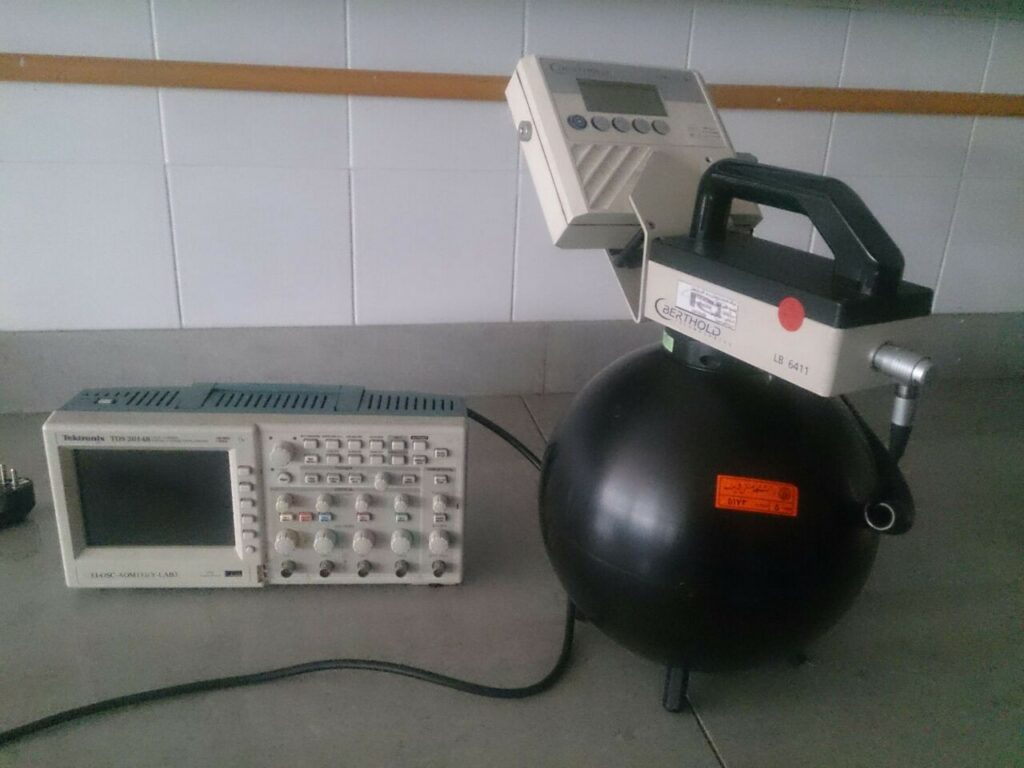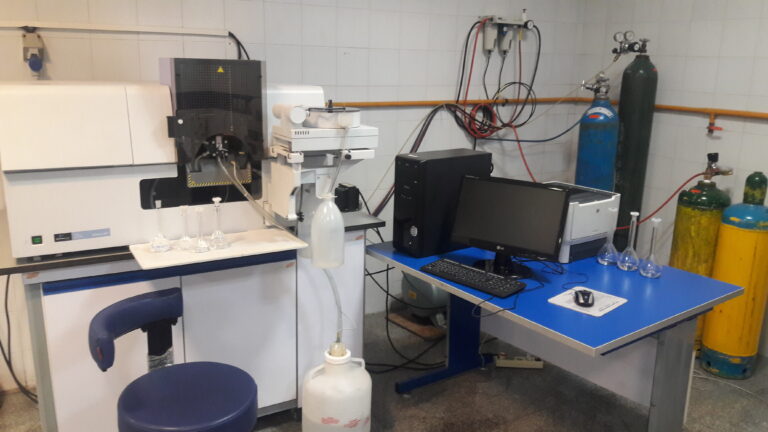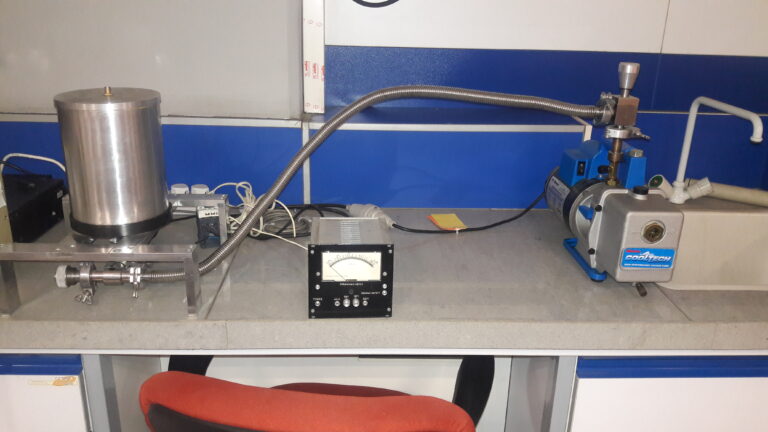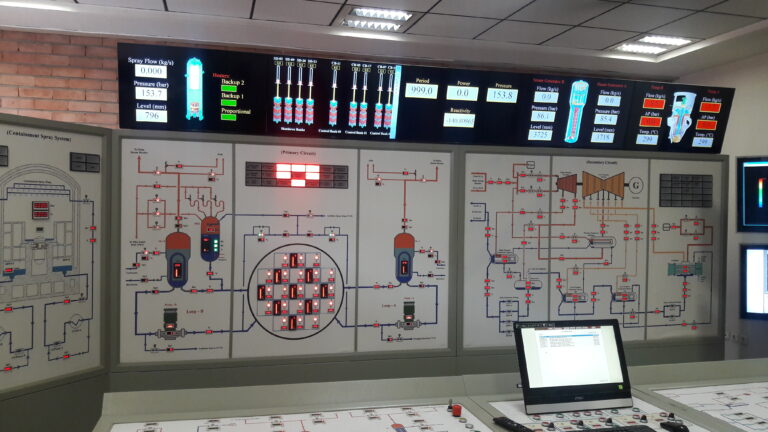

Laboratories of nuclear engineering group
- Medical Radiation laboratory
The medical radiation laboratory is equipped with the following types of equipment and facilities:
- Male and Female RANDO® phantom
- High Purity Germanium (HPGe) Radiation Detector
- The thermoluminescent dosimeter (TLD)
- Plastic, liquid, and inorganic scintillators
- Gamma Radiation Dosimeters
- Collimator
Moreover, we are able to offer the following specialized services:
1- Advisory to researchers in the medical radiation field
2- Possibility of defining common projects in the field of individual and environmental dosimetry
3- Design of radiation shielding for medical radiation centers
4- Design and fabrication of QC phantoms for medical imaging systems
5- Possibility of collaboration with other universities and organizations in the field of radiation detection and dosimetry.



- Radiation Detection and Dosimetry Laboratory (Usage: educational and research)
The Radiation Detection and Dosimetry Laboratory is operated by the nuclear engineering group in Department of energy engineering. This laboratory is a dual use space, utilized for both graduate and PhD teaching and research. This lab is equipped with essential instruments for the detection and measurement of alpha, beta, gamma, and neutron radiation.
The graduate curriculum, within the department of nuclear engineering, gives equal importance to lab and classroom education. To serve this purpose, our department has dedicated, world-class teaching spaces that educate, train and help students relate theory with practice through laboratory sessions. The space occupies approximately a 2 × 80 m2 and is fitted with gas proportional counters, scintillator (NaI (Tl), BGO, plastic, liquid, etc.) spectrometers, silicon charged particle radiation detectors, HPGe detector, BF3 neutron detectors and LB 6411 neutron probe.
The Radiation Detection and Dosimetry Laboratory offers students the opportunity of working with instrumentation commonly found in the nuclear industry and also in environmental monitoring of radioisotopes in the environment. Many of the experiments involve an investigation into the spectroscopy of radiation emitted by radioisotopes and students may study sealed radioactive sources, kept within the laboratory. The experiments have some specific goals but also allow for further investigation and it is often the case that students push their experiments in new and interesting directions.
A list of typical experiments are given below. Note that we regularly update our experiments, so those available in a particular term may not exactly correspond to this list.
- Experiment 1: Introduction to electronic signal analysis in nuclear radiation measurements.
- Experiment 2: Gamma-ray spectroscopy using NaI (Tl) and BGO, BC400, NE-213, etc.
- Experiment 3: Gamma-ray absorption in matter (basic).
- Experiment 4: Gamma-ray efficiency calibration.
- Experiment 5: Absolute and relative activity measurements.
- Experiment 6: Gamma-ray coincidence counting techniques.
- Experiment 7: High-resolution gamma-ray spectroscopy with HPGe detector.
- Experiment 8: Alpha spectroscopy with silicon charged particle detectors.
- Experiment 9: Beta spectroscopy.
- Experiment 10: Experimental and theoretical study of BF3 detector response.
- Experiment 11: Neutron gamma discrimination with NE213.
Key Capabilities
- Measurement of four main types of radiation (alpha, beta, gamma and neutron).
- Six independant stations supporting over 11 different radiation experiments.
- Modular design allows students to design and assemble their own radiation measurement system.
- Quantification of natural and man-made radioactivity with high accuracy.
- High-resolution gamma-ray measurements.

- Research laboratory of ray application
In the Nuclear Physics Laboratory of the Faculty of Nuclear Engineering, there is the necessary equipment for students’ practical acquaintance with the basics of nuclear physics and related research. Among the experiments that can be done in the educational application of this laboratory, the following can be mentioned:
- How to use radioactive sources and laboratory devices
- Obtaining the characteristic curve of Geiger-Müller detector
- Measurement of the resolution of Geiger Müller
- Measurement of the activity of an unknown substance
- Measurement of linear attenuation coefficient
- Measurement of beta particle range
- Measurement of half-life by neutron activation method
- Spectroscopy using single channel and multichannel analyzer

Electronic Laboratory (Usage: research)
In the electronics laboratory of the faculty of energy engineering, there is the equipment needed to conduct the desired research. Repairs of electronic devices are performed in this laboratory. We are developing electronic laboratory to help introduce students to nuclear science.
Plasma Focus Laboratory (Usage: research)
One of the devices used in nuclear fusion is plasma focus (PF). PF in comparison to similar systems, is more simple, and as the economic view is cheaper. PF’s technology, in comparison to other pulsatile systems, is less complex. This device is capable of producing various range of rays such as X, neutron, electrons, and also charged ions. Some of its applications are:
1- Educational applications.
2- Lithography with X and electron rays.
3- Material application such as thin film coatings.
4- Radiography applications.
5- Researching on controlled nuclear fusion.
6- Radioisotope production.
Sharif university plasma focus (SUTPF) started up in 2010 and accomplished some projects in master and Ph.D. degrees.
- Chemical engineering laboratory (Usage: research)
Nuclear chemical engineering laboratory is one of the research laboratory subdivisions of Energy engineering department. The majority of the research activities conducted in this lab is focused on the areas below:
1- Environmental behavior of radio nuclides.
2- Radio nuclide tracing.
3- Radioactive wastewater treatment.
4- Adsorption of radioactive materials, using nano adsorbents.
- Nuclear Reactor Laboratory (Usage: Educational)
The plan to build and develop a reactor simulator laboratory was put on the agenda of the department of energy engineering in order to acquaint students with the process of commissioning and operation of nuclear power plants and to analyze possible events in it. In the first phase of operation of this laboratory, focusing on the first circuit of a hypothetical 100 MW power plant, the equipment of the first circuit, the reactor core and the equations governing the physics of the reactor are simulated in software and hardware for operation teaching and analysis of possible accidents.
In the next step, after identifying the points in need of improvement, the second circuit of the power plant along with part of safety and auxiliary systems (such as Emergency Core Cooling System (ECCS) and Chemical Volume Control System (CVCS)) was added to the reactor simulator, which led to the study of the wider range of possible phenomena in the operation and accident management of nuclear power plants. After this stage, the panel for connection to the national electricity network was added to the simulator in order to study the issues related to the connection of the power plant to the electricity network.
This simulator is now widely used in courses related to reactor engineering such as nuclear safety, reactor laboratory and simulation of many potential neutronic and thermal-hydraulic events. Also, in some training courses held at the Department of Energy Engineering (DOEE), such as “Familiarization of national dispatching personnel with the control of the power of nuclear power plants”, this simulator has played an important role in demonstrating the considerations of nuclear power plants operation.
The most important objectives in the reactor simulator laboratory are:
- Familiarity of students with different components of a power reactor and related control logics.
- Paying special attention to the control logics of the components in coordination with each other based on the required functions.
- Achieving a deeper understanding of the basic concepts of reactor physics and thermal-hydraulics.
- Achieving a logical analysis of the dynamic behaviors of the nuclear reactors by studying the transitions.
In this laboratory, the following set of experiments is predicted and can be performed:
- Thermal-hydraulic experiments:
- Reactor Heating Process
- Investigating the effect of the second circuit pressure on the first circuit.
- Investigation of the effect of pressurizer components on reactor heating.
- Nuclear physics experiments:
- Multiplicity factor and the effect of temperature change on it.
- Criticizing the reactor with control rods and boric acid.
- Calibration of control rods and boric acid.
- Determination the total value of the control rod.
- Accident Analysis:
- Abnormal changes in reactivity.
- Reduction of the coolant flow rate (as a LOFA).
- Increase of the coolant inventory in the first circuit.
- Increase and decrease of heat removal from the primary coolant system (IOHR and DOHR).
- Reduction of coolant inventory (LOCA).

Related Departments and Research Institutes
Sharif Energy Research Institute(SERI)
Department of Mechanical Engineering
Department of Electrical Engineering
Department of Physics
Department of Chemical Engineering
- Contact Us
Department of Energy Engineering, Taymouri Alley, Ghasemi Street, Habibollahi St., Azadi Avenue, Tehran, Iran
Tel: 021-66166101-2 Fax: 021-66081722
